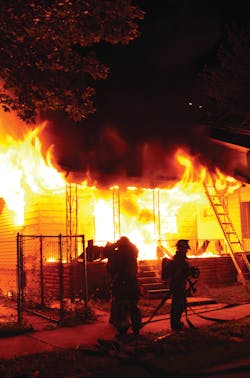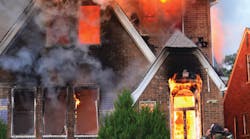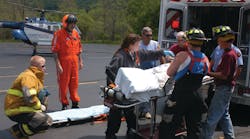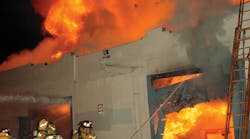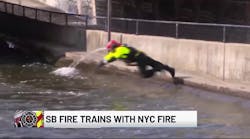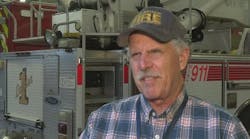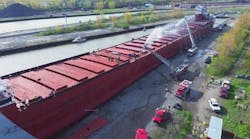Response time and available staffing are the two most important factors that influence fire department success at emergency scenes. There has been much debate in the fire service literature and among fire service managers and city administrators about the relative effectiveness of fire companies (i.e., a functional working unit of a fire department, usually consisting of a given number of personnel assigned to a single piece of apparatus) at various staffing levels.
The main issue is what minimum company size is needed to be able to provide basic fire suppression capabilities, combined with a timely response to ensure the highest potential to impact fire control, firefighter safety and civilian survivability. Let’s evaluate the use of response time as a service benchmark, a longheld indicator of performance.
Before we get into benchmarking your response time performance, we should start with developing a working definition of a response time. The definition of response time often depends on perspective – that of the customer and the fire department. From our customer’s viewpoint, response time begins from the time they notice or become aware of a problem. On the other hand, the response-time clock for the fire department starts when the call for help is received from our customer. In either case, the response-time clock stops when the fire department arrives at the emergency scene. In both cases, the quickest response is deemed to be the most effective (assuming you are adequately staffed) in terms of fire control and victim rescue.
Subject to interpretation
There are several limitations with respect to response times, not the least being they are highly subject to interpretation. In other words, the measurement of response time frequently varies from one department to the next and measurement methods render comparisons inaccurate. Some jurisdictions measure response time from when the fire department is dispatched until the arrival of the first suppression apparatus. Others may begin the count when the call is received at the 911 center and stop the clock when the first emergency unit arrives on scene, regardless of whether it has the ability to suppress the fire or rescue victims.
Some departments measure response time for all events, emergency and routine (i.e., no lights/siren), while some track only response times to emergency events where apparatus respond with lights and sirens activated. Another consideration is reporting “on-scene” prematurely or forgetting to communicate the arrival. For our discussion in this article, we will consider the response-time clock stopping when the first suppression apparatus arrives on scene. In addition, we will measure response time for emergency events only. As we have stated, there is no national standard on how to measure response time. While the National Fire Protection Association (NFPA) 1710, Standard for the Organization and Deployment of Fire Suppression Operations, Emergency Medical Operations, and Special Operations to the Public by Career Fire Departments, and 1720, Standard for the Organization and Deployment of Fire Suppression Operations, Emergency Medical Operations and Special Operations to the Public by Volunteer Fire Departments, offer guidance, those standards are not laws. Thus, compliance is voluntary.
Since staffing studies and fire growth models support the benchmarks established in NFPA 1710 and 1720 response standards, let’s use NFPA 1720 as a template for establishing your response time benchmark. The chart WHERE ON PAGE? indicates recommended standards of response set by the NFPA for predominately volunteer fire departments (AHJ is the Authority Having Jurisdiction).
This standard is good in that it avoids a cookie-cutter approach to benchmarking a response times. It measures service based on community profile and demographics. You will also notice a recommended compliance rate, illustrated in percentage of responses attained. For example, in a community with a population density of 1,000 residents or greater per mile, the standard recommends a response time of nine minutes for 90% of responses measured. Many departments use the 90th percentile as a measure of success. However, a department may choose to use a higher percentage or lower depending upon community response expectations. So how should you determine your appropriate percentile measurement?
When establishing response-time measures, there is no single guideline that conveniently fits all departments. A systems approach that considers economics, staffing model, risks, political aspirations, topography and community demographics should be evaluated to reach a desirable goal. Response goals should be matched to the individual municipality and identified by the community with the active involvement of elected officials, city management, fire administrators and citizens.
Common measure points to consider include identifying what you are including; e.g., emergency or non-emergency events. Achieving a single standard may be more difficult if you lump and measure all responses together. Since many of us in the fire world believe that a quick response affects the outcome of true emergency events such as structure fires, perhaps the better approach is to measure only emergency events. This not only improves your chances of meeting your response time benchmark, but also gives you an idea on how you are performing for your most critical events.
Many departments further qualify response time and divide the overall response time to emergency events into category of response for specific event types. Examples may be structure fires (divided further into occupancy type) and technical rescue events. Drilling further, time-of-day and day-of-week will also paint a broader picture of your department’s strengths and where you have opportunities to improve your response delivery. Plotting your response time geographically may also help in planning for adequate coverage. Seasonal fluctuation in response times is another consideration, especially in regions where there is heavy tourist populations (congesting traffic) or in regions prone to poor weather (e.g., ice and snow).
A sample standard
Let’s use the fictional town of Jonesville and compare the town’s demographic profile to the NFPA 1720 standard to determine a response standard.
Resident population 12,000
Transient (daytime) population 5,400
Square miles served 36
Fire department budget $300,000
Total personnel budget $200,000
Revenue from taxes $0
Full-time fire department employees 0
Part-time fire department employees 72
Annual call volume 400
Average response time 7.1 minutes
Residents per square mile 483
Using NFPA 1720 criteria, Jonesville would be classified as a rural community in terms of fire protection. In this case, the Jonesville Fire Department may establish its response-time goal as follows: The department shall be capable of placing six firefighters on the scene of an emergency in no greater than 14 minutes, 59 seconds for 80% of the emergency responses.
For discussion, we have taken the liberty of defining when the clock starts (from dispatch) and that we will count only emergency calls. We have also determined that the clock stops when the first suppression apparatus arrives on scene.
The second part of the response time equation tracks the number of personnel arriving on scene to determine whether you meet the minimum staffing requirement of six fire personnel. For simplicity, we feel that recording the number of responders arriving on suppression apparatus to emergency events is easier to track than attempting to track the number of responders to all events. To further quantify your service, you could capture the number of responders on the first three arriving suppression apparatus to gauge the total number responders arriving (hopefully) early enough to improve the outcome.
On average, Jonesville responds to 400 calls for service on an annual basis. If 20% of its annual calls comprise emergency events, then we would be measuring 80 calls. Looking at these 80 calls, the 80th percentile would be 64 calls.
Response issues
Many fire departments continually evaluate their service and place a priority on reducing response times and increasing staffing levels to emergency incidents. Several approaches have been adopted to address these response issues. A partial list may include:
- The closest district fire station geographically located to the incident is alerted of the call and responds to it.
- Multiple-station dispatching is used by many departments to improve both response time and staffing deficiencies.
- Incorporation of a duty-officer program to ensure an immediate response to size-up or triage calls quickly. This helps readily determine the needs of an emergency incident and coordinate response resources.
- Automatic mutual aid to reported working structure fires and rescues.
For simplicity, the department may choose to separate the response time into community preparedness, turnout time and total response time and develop strategies that address each. In this manner, each portion of the response measurement can be evaluated and possibly improved.
